Imagine a future where lush green plants thrive in every home, office, and building with families being able to harvest fresh vegetables from their in-built gardens. Picture libraries where books sit side by side with plants, all growing harmoniously without the need for soil. As we become more aware of the numerous benefits surrounding sustainability, we have already begun to revolutionize how our plants are grown. This movement is epitomized by hydroponics and aeroponics, two innovative gardening methods that can enhance plant growth right from our very living spaces. So, what are the key differences between them, and which is better? As we embark on an exploration into these two cutting-edge gardening techniques, we will discover how they function without soil, their similarities and differences, and ultimately the most suitable option for your own sustainable garden. Let's dive into the world of soil-less plant cultivation and unearth the potential it holds for our greener future.
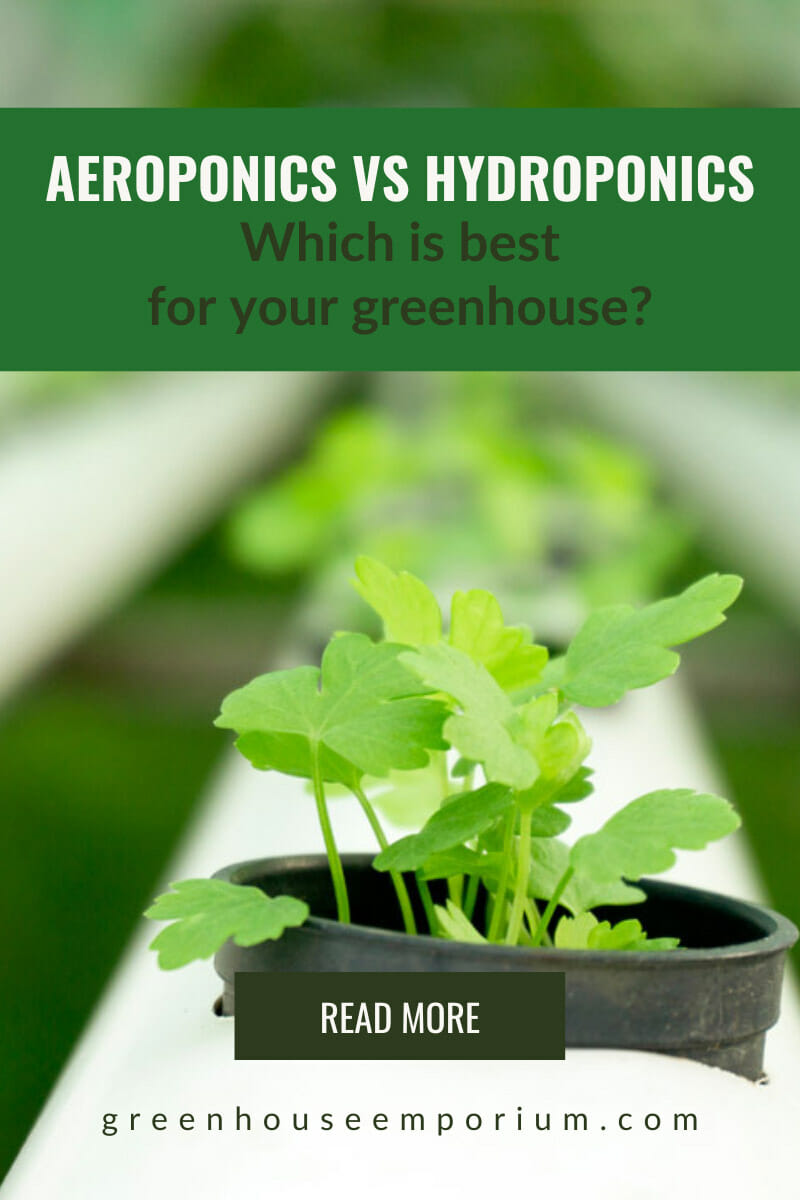
1. Introduction to Hydroponics & Aeroponics in Urban Farming
How To Guide: Embrace Hydroponics and Aeroponics in Urban Farming
Urban farming has evolved exponentially in recent years, with hydroponics and aeroponics becoming popular choices for growing fresh produce in compact, limited spaces. It's time to introduce yourself to these futuristic, environmentally-friendly farming methods and experience the benefits firsthand. Here's a step-by-step guide to establishing hydroponic and aeroponic systems in your urban farm:
Step 1: Understand the basics - Hydroponics: In this soilless method, plants are grown by immersing their roots in a nutrient-rich solution. It allows for efficient delivery of water and nutrients, resulting in quicker and healthier plant growth. - Aeroponics: This technique involves spraying or misting the roots of plants with a nutrient-rich solution, ensuring optimal oxygen intake. It's a more advanced method that provides faster growth and higher yields than hydroponics.
Step 2: Choose the right systemong> - Determine which method suits your needs, space, and budget. Hydroponics is more beginner-friendly, while aeroponics may need extra technical effort and investments.
Step 3: Select an appropriate space - Find an area with adequate sunlight, temperature control, and ventilation. Keep in mind that hydroponic and aeroponic systems can be set up indoors or outdoors, but control over environmental factors is essential for successful growth.
Step 4: Invest in quality equipment - Purchase quality equipment, such as pumps, containers, timers, and nutrient solutions, to ensure your plants receive the proper care and can flourish.
Step 5: Choose your plants - Opt for plants that thrive in a soilless environment like leafy greens, herbs, and small fruits. Avoid root vegetables for hydroponics, as they're more suitable for aeroponics.
Step 6: Learn to monitor and maintain the systems - Regularly check nutrient levels, pH balance, and water temperature. Keeping a clean environment is essential to prevent bacterial growth and ensure healthy plant growth in both systems.
In conclusion, incorporating hydroponics or aeroponics in urban farming can revolutionize the way you grow food, add a futuristic element to your gardening, and contribute to a greener future. [1][2]

2. Similarities: Both Do Not Use Soil
How to Understand the Similarities Between Aeroponics and Hydroponics: A Step-by-Step Guide
Are you intrigued by the world of soilless gardening? Aeroponics and hydroponics both offer innovative ways to grow plants without using soil. In this step-by-step guide, we'll explore the key similarities between the two methods. Grab your gardening gloves and let's dive in!
Step 1: Recognize their common objective - Both aeroponics and hydroponics aim at maximizing the growth potential of plants while minimizing the resources used, such as water, space, and soil.
Step 2: Appreciate the use of nutrient solutions - One of the primary similarities between aeroponics and hydroponics is their reliance on nutrient-rich solutions for plant growth. Both methods involve using water mixed with essential nutrients to provide plants with the sustenance they need to grow.
Step 3: Acknowledge the absence of soil - As mentioned earlier, both aeroponics and hydroponics do not utilize soil in their processes. The absence of soil reduces the risk of pest infestations, diseases, and weeds, making these methods a popular choice for indoor and urban gardening.
Step 4: Understand the role of water conservation - Both systems emphasize water conservation, as these methods require significantly less water than traditional soil-based gardening. This is because the nutrient solutions in both aeroponics and hydroponics are recirculated and reused, leading to a more sustainable and eco-friendly process.
Step 5: Familiarize yourself with the importance of aeration - Providing adequate oxygen to the roots is crucial in both aeroponics and hydroponics. The methods employed to deliver oxygen to the roots might differ, but the underlying principle remains the same – plants need to breathe to thrive!
Step 6: Embrace their versatility - Both aeroponics and hydroponics systems can be used for various types of plants, ranging from fruits and vegetables to flowers and herbs. This versatility means that you can experiment with different plant varieties using these soilless gardening techniques.
In conclusion, while aeroponics and hydroponics might differ in their approach to delivering nutrients to the roots, the two systems share fundamental similarities. Both systems thrive in their ability to grow plants without soil and employ the use of nutrient solutions, water conservation, and oxygenation. By understanding these similarities, you can choose the appropriate soilless gardening technique that best suits your needs and preferences. [3][4]
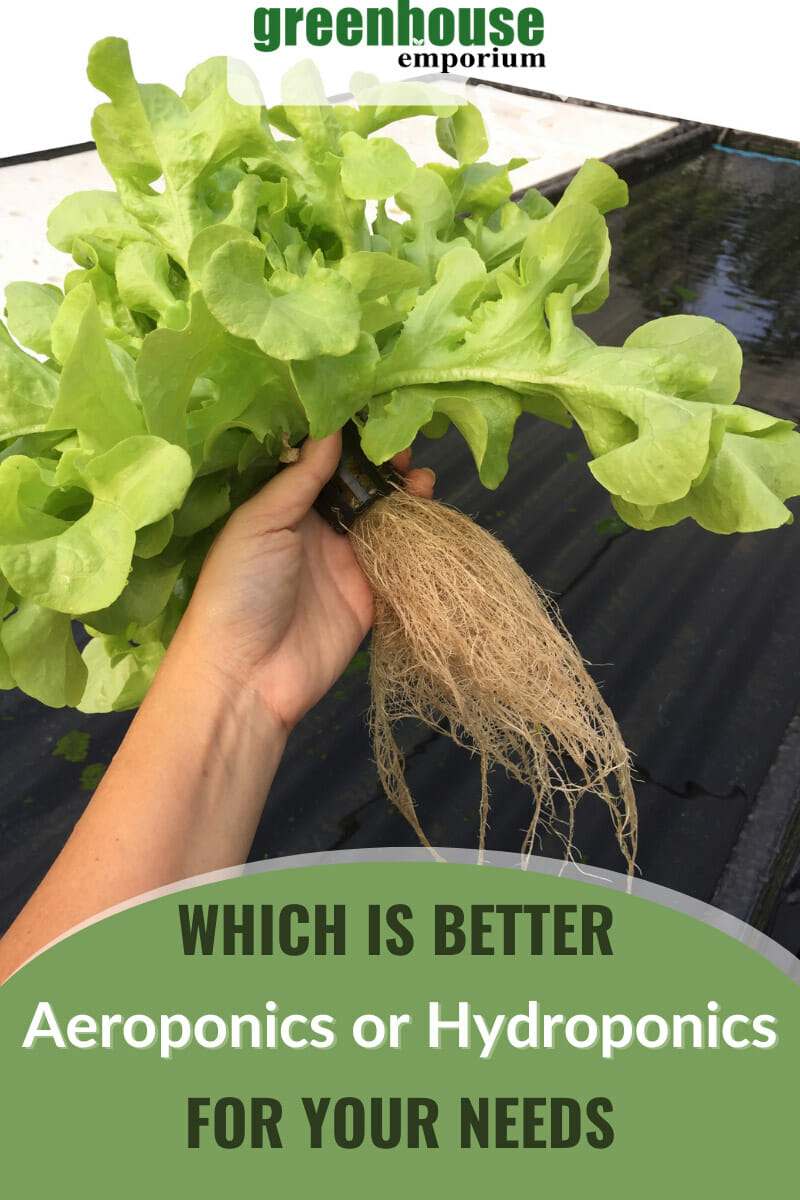
3. Hydroponics: Irrigates Roots with Nutrient Solution
How to Set Up a Hydroponics System: Irrigating Roots with Nutrient Solutions
If you're intrigued by the concept of Hydroponics and want to try your hand at growing plants in nutrient-rich water, you've come to the right place! Growing plants hydroponically offers various advantages, such as increased growth rate and yield, lower water usage, and reduced pest problems. Follow these simple steps to create your very own Hydroponics system for irrigating roots with nutrient solutions.
1. Choose the right system: Begin by selecting a suitable hydroponic system for your needs. There are various systems available, such as Nutrient Film Technique (NFT), Ebb and Flow, and Aeroponics. Each system has its pros and cons, so conduct thorough research to determine the best fit for your goal.
2. Assemble the required materials: You'll need the following materials for your Hydroponics setup - a reservoir for the nutrient solution, water pumps, air stones, grow trays or channels, grow medium (such as coconut coir), and support structures (e.g., trellises) for the plants.
3. Prepare the nutrient solution: A correctly balanced nutrient solution is critical for plant growth and health in hydroponics systems. Ensure it contains the right quantities of macroelements (nitrogen, phosphorus, potassium, sulfur, calcium, and magnesium) and microelements (iron, manganese, boron, zinc, copper, and molybdenum).
4. Fill the reservoir and install the irrigation system: Fill the reservoir with the prepared nutrient solution, and connect it to the water pump and air pump. This enables the circulation of oxygenated nutrient solution to the plant roots, ensuring optimal growth and health.
5. Plant the seeds or seedlings: Position your seeds or seedlings in the grow medium within the grow trays/channels, and ensure they're appropriately spaced apart. The grow medium should allow the roots to access the nutrient solution while still providing ample aeration.
6. Monitor and maintain: Keep an eye on pH levels, temperature, and nutrient concentration in your hydroponic system, and make adjustments as needed. Regularly check plants for signs of disease or pest infestation, and address any issues promptly.
7. Harvest and enjoy: Once your plants reach maturity, it's time to enjoy the fruits (or veggies) of your labor! Harvest your crops, relish in their increased growth rate and yield, and experience the satisfaction of successful hydroponic gardening. [5][6]
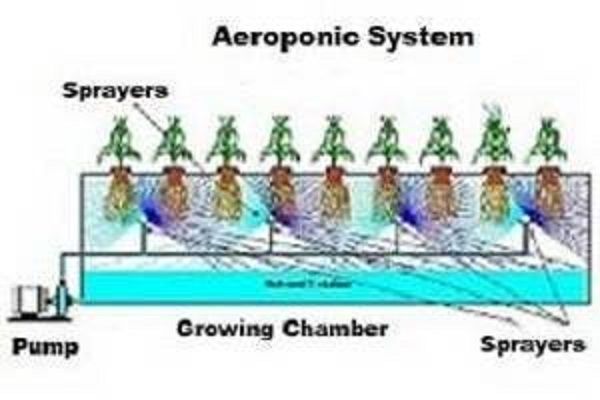
4. Aeroponics: Sprays Nutrient Solution Directly on Roots
How To Guide: Set Up an Aeroponic System for Spraying Nutrient Solution Directly on Roots
Aeroponics is an advanced gardening technique that allows plants to grow in an environment where nutrient-rich mist is sprayed directly onto their roots. This innovative method has several advantages, such as faster growth rates, higher nutrient absorption, and reduced water usage. Here's a step-by step guide to help you set up your own aeroponic system:
1. Choose the right location: Find a well-ventilated area with access to natural light or artificial grow lights. Make sure you have enough space for the aeroponic equipment, water tank, and pumps.
2. Select your aeroponic system: Decide whether to purchase a pre-made aeroponic kit or build your own custom system. Consider factors like budget, space, and desired plant type when making your decision.
3. Prepare your nutrient solution: The nutrient solution is an essential component of the aeroponic process. Mix water-soluble fertilizers and trace elements according to the recommendations for your specific plant species.
4. Install the misting system: Set up a high-pressure misting pump that can handle the water flow rate needed for your aeroponic system. Attach it to spray nozzles that are strategically placed around the roots of your plants.
"The secret to the success of aeroponics lies in the direct delivery of the nutrient solution on the plants' roots, allowing for higher nutrient absorption and faster plant growth." – Urban Garden Expert
5. Suspend the plants: Secure your plants firmly with a support structure, such as a foam collar or mesh pot, that allows the roots to be exposed to the nutrient mist. Ensure they are adequately spaced to prevent overcrowding and allow for sufficient air circulation.
6. Set up a timer and control system: Automate the misting schedule by using a digital timer that regulates the frequency and duration of the nutrient spray. You can also install a control system to monitor parameters like pH, electrical conductivity, and temperature of the nutrient solution.
7. Monitor and adjust: Keep an eye on your plants' progress and make necessary adjustments to the nutrient solution, spray frequency, or mist duration, as needed. Regular monitoring is vital for maintaining a healthy and thriving aeroponic garden.
With these steps in place, you can successfully set up and maintain an aeroponic system that sprays nutrient solution directly on the roots, paving the way for a futuristic and efficient gardening experience. [7][8]
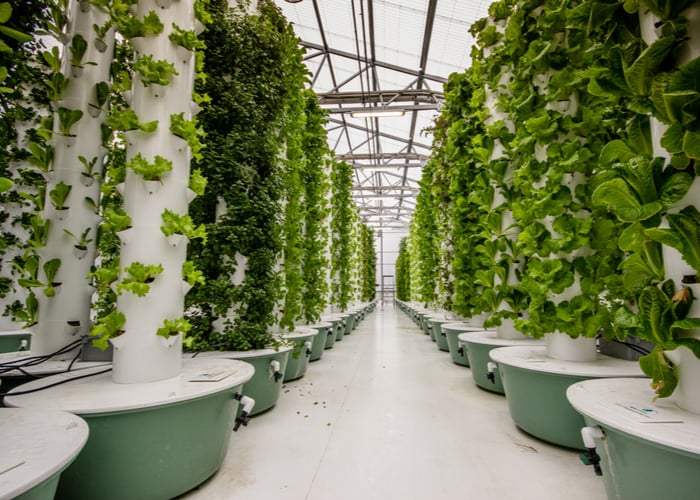
5. Future of Gardening: Innovations in Aeroponics
The Future of Gardening: Innovations in Aeroponics
The future of gardening and urban farming is undoubtedly moving towards innovative and sustainable methods like aeroponics. This technology is not only changing the way we grow plants, but also contributing to environmental conservation. As we forge ahead, let's explore some exciting innovations in aeroponics that will undoubtedly shape the future of gardening:
1. Vertical Farming: Aeroponics makes it possible to grow plants in vertical towers, maximizing the use of space in urban environments. This method can bring fresh, healthy, and local produce to city-dwellers and reduce the carbon footprint associated with transporting food long distances.
2. Advanced Monitoring Systems: Smart sensors and data analytics can be integrated into aeroponic systems to monitor key growth parameters such as nutrient levels, humidity, and temperature. This allows for real-time adjustments and optimization of plant growth, ensuring healthy and efficient crop production.
3. Solar-Powered Aeroponics: Combining renewable solar energy and aeroponics can create a truly sustainable, off-grid farming solution. This integration will make it possible to grow plants almost anywhere, regardless of access to electricity or other resources.
4. Growing Exotic and Rare plants: Aeroponics enables the cultivation of exotic and rare plant species that may be difficult to grow in traditional soil-based environments. This could lead to the discovery of new flavors, medicines, and other valuable resources.
5. Space Farming: Aeroponic technology has already been tested by NASA for potential use in space missions. Being able to grow plants in a soilless and gravity-free environment opens up countless possibilities for future space exploration and colonization.
As we continue to develop this futuristic technology, aeroponics will undoubtedly play a crucial role in defining the future of gardening and sustainable food production. From vertical farming to solar-powered systems, the possibilities are truly endless. Embrace the future of gardening and start exploring the world of aeroponics today! [9][10]

6. Aesthetics: Sleek Look of Aeroponics vs Hydroponics
Aesthetics: Sleek Look of Aeroponics vs Hydroponics
Incorporating alternative gardening methods such as aeroponics and hydroponics into urban spaces not only promotes sustainability but also adds an appealing aesthetic dimension to various settings. Both aeroponics and hydroponics offer sleek and futuristic looks, but understanding their visual appeal could help you determine which system might be the best fit for your specific needs.
Here are a few aesthetic aspects to consider when choosing between aeroponics and hydroponics:
1. Space utilization: Aeroponic systems, with their suspended plants and misting technology, offer a visually striking setup. Due to the vertical design, aeroponics efficiently utilize the available space, making them ideal for limited spaces such as urban apartments or small gardens.
2. Attention to detail: Hydroponic systems offer a sense of clean design and technological integration. These systems often have neatly arranged trays or containers housing the nutrient-rich water, providing an orderly appearance.
3. Lighting: The use of LED grow lights in both aeroponic and hydroponic systems adds a vibrant touch to the plants' environment. These lights can be used to create an exciting visual experience for anyone visiting the space.
4. Versatility: Both aeroponic and hydroponic systems can be customized to fit a wide range of settings, making them ideal for various environments. From stylish home gardens to sophisticated laboratory setups, these systems can be tailored according to the user's preferences.
5. Modern appeal: The incorporation of innovative technology and advanced materials in aeroponic and hydroponic systems offers a futuristic and sleek appearance. These systems often feature components that look like they are straight out of a science-fiction movie, making them a conversation starter for curious visitors.
6. Eco-friendly aesthetics: One of the most significant visual appeals of both aeroponic and hydroponic systems is the understanding that these methods are sustainable and eco-friendly. The knowledge that these systems promote a greener living appeals to environmentally conscious individuals.
In conclusion, both aeroponic and hydroponic systems offer visually appealing aesthetics that can transform any space into a futuristic and environmentally friendly garden. It is essential to consider your preferences and requirements when deciding which system will best suit your needs. [11][12]
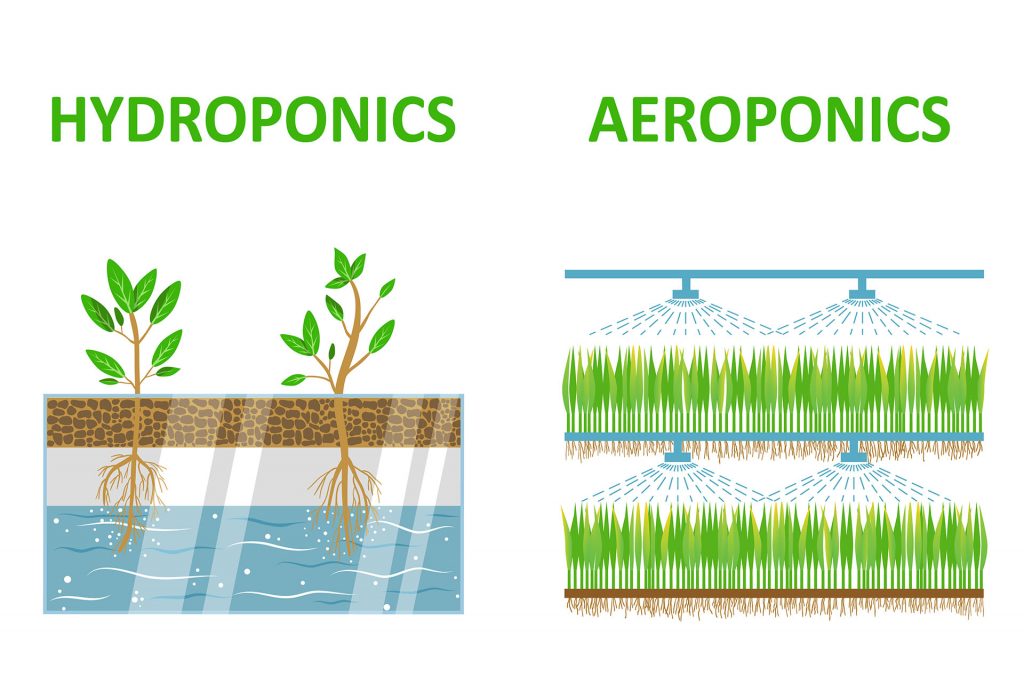
7. Key Differences: Sprays vs Irrigates Nutrient Solution
How To Guide: Understanding the Key Differences Between Sprays and Irrigates Nutrient Solution in Aeroponics and Hydroponics
When considering an alternative farming method like aeroponics or hydroponics to grow healthy and robust plants, it's crucial to understand the key differences between the nutrient delivery methods - spraying and irrigating. In this guide, we'll help you grasp these differences to help you make an informed decision.
1. Nutrient Delivery: Aeroponics delivers vital nutrients through a mist that’s sprayed onto the plant roots, while hydroponics involves the continuous or intermittent flow of nutrient-rich water around the plant roots.
2. Oxygen Supply: The aeroponic method promotes higher aeration levels, thanks to the suspended plant roots that can easily absorb oxygen in the air. On the other hand, hydroponic systems may require additional aeration strategies, such as using an air pump.
3. Water Usage: Hydroponic systems require larger volumes of water compared to aeroponic systems. The latter conserves water due to the minimal amount consumed when misting plant roots.
4. Nutrient Uptake: In aeroponics, the mist surrounds the plant roots and lingers, resulting in accelerated nutrient absorption. Hydroponic systems circulate nutrient solutions around the roots, which may lead to varying nutrient distribution and absorption rates.
5. Risk of Bacterial Exposure: Aeroponic systems offer a closed, controlled environment that minimizes bacterial exposure to plant roots. Hydroponic systems, due to their high humidity levels, pose a greater risk for bacterial contamination.
6. System Maintenance: Hydroponic systems involve the use of larger containers and more complex equipment to circulate nutrient solutions. Aeroponic systems often require less maintenance, relying on simple misting equipment and smaller reservoirs.
7. Crop Yield: Due to the increased airspace and efficient nutrient delivery, aeroponic systems tend to yield larger plants and crops than hydroponic systems.
In summary, both aeroponic and hydroponic systems offer unique benefits in terms of nutrient delivery methods, water usage, and crop yield. It’s essential to weigh the advantages of sprays versus irrigates nutrient solutions depending on your gardening needs and available resources. [13][14]
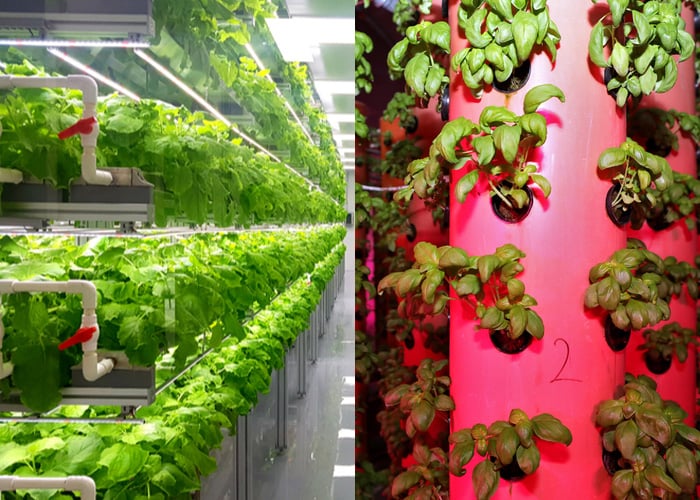
8. Hydroponics History: From Hanging Gardens to Nutrient Solutions
A Brief Guide to Hydroponics History: From Hanging Gardens to Nutrient Solutions
The history of hydroponics dates back thousands of years, originating from ancient civilizations such as Babylon and the Hanging Gardens of Babylon. Today, hydroponics has evolved into a modern and efficient method of growing plants without soil, utilizing nutrient-rich solutions in a controlled environment. Below is a brief guide highlighting significant milestones in the history of hydroponics.
1. Ancient Civilizations: Evidence suggests that the Hanging Gardens of Babylon, one of the Seven Wonders of the Ancient World, utilized a primitive form of hydroponic technology for continuous cultivation, allowing for impressive and lush growth on terraces without soil.
2. The Aztecs: Around 1000 AD, the Aztecs in Mexico developed a system of floating gardens known as "chinampas," which allowed plants to be grown on floating reed mats with their roots submerged in nutrient-rich lake water.
3. 17th Century England: English scientist Sir Francis Bacon conducted early experiments with the growth of plants in water, rather than soil, which laid the groundwork for modern hydroponics.
4. 19th-20th Century Advancements: Researchers such as Julius von Sachs and William Frederick Gericke continued to experiment with soil-less cultivation, eventually leading to the modern hydroponic systems we see today, relying on nutrients dissolved in water to grow plants.
5. 21st Century Technologies: With advancements in LED lighting and nutrient solutions, hydroponic systems continue to become more efficient, resulting in higher crop yields and less reliance on traditional soil-based farming methods.
In conclusion, the history of hydroponics is a fascinating journey from the ancient Hanging Gardens of Babylon to contemporary nutrient solutions and technologies. As we look to the future of farming, hydroponics holds great potential in addressing food shortages and providing sustainable and efficient methods for cultivation. [15][16]

9. Aeroponics History: Russian Exobiologist and NASA Research
How to Guide: Understanding the History of Aeroponics - A Journey from Russian Exobiologist to NASA Research
1. Begin with the foundations: The concept of aeroponics was first established by Russian exobiologist Vladimir Mironov in the 1970s, who initially experimented with this plant growth technique to study root-zone behavior and the effects of microgravity on plant growth.
2. Explore the growth of aeroponics in space research: Aeroponics took a major leap forward in the 1980s when NASA started to explore this innovative method for growing plants in space missions. The space agency was intrigued by the prospect of aeroponics as an efficient method to produce food, recycle waste, and produce oxygen for astronauts.
- Quote: "Aeroponics is more than a curiosity. It is a technology that has captured the interest of NASA, which could use aeroponics to support space travelers, because it uses little water and requires no soil." - Richard Stoner, the founder of AeroGrow Systems.
3. Recognize NASA's significant contributions to aeroponics: NASA further developed aeroponic technology by reducing droplet size of the nutrient-rich mist, which optimized the nutrient absorption process and increased plant growth rate. This led to the birth of high-pressure aeroponics that we know today, which has revolutionized the agricultural industry.
4. Appreciate the widespread adoption of aeroponics: The advances in aeroponic technology have made it possible to grow plants in controlled environments, maximizing space usage and increasing crop yields. Today, many commercial enterprises and home gardeners have adopted aeroponics for diverse purposes, from urban farming to large-scale agricultural projects.
5. Embrace the future of aeroponics: With a rich history of innovation and research, aeroponics continues to evolve and adapt to the changing needs of modern agriculture. As more people embrace this futuristic farming method, we can expect new advancements in plant growth technologies, leading to greener and more sustainable agriculture.
By understanding the history of aeroponics, from Russian exobiologist research to NASA's extensive involvement, you too can learn to appreciate this cutting-edge technology and its potential to revolutionize modern agriculture. [17][18]

10. Which System is Better? Yields, Cost, and Maintenance Comparison
When it comes to choosing between aeroponics and hydroponics, it's essential to weigh the pros and cons of each system based on factors like yields, costs, and maintenance requirements. Here is a comprehensive comparison between the two:
Yields: - Aeroponics: Aeroponic systems typically produce larger yields and speed up overall plant growth while using fewer resources. The fact that roots always have sufficient oxygen exposure also promotes growth. - Hydroponics: Although they might not produce as huge yields as aeroponics, hydroponic systems still offer impressive growth rates and crop sizes in comparison to traditional soil gardening.
Cost: - Aeroponics: Aeroponic systems can be more expensive initially due to their complex design and the need for specific supplies. However, the increased yield can offset these costs over time. - Hydroponics: Generally, hydroponic systems are cheaper and easier to set up, making them more accessible for beginners.
Maintenance: - Aeroponics: These systems require more detailed maintenance as the misting mechanism can lead to clogging, making it crucial for growers to regularly clean and monitor their setup. - Hydroponics: While there is still some maintenance involved, hydroponic systems are often more straightforward and user-friendly. Tasks like replacing nutrient solutions and monitoring pH levels become regular practice.
Based on the comparison above, here's a quick guide to help you decide:
- Choose aeroponics if: You want higher yields, faster plant growth, and nutrient-rich crops, and are willing to invest time and resources in maintaining a more complex system. - Choose hydroponics if: You're a beginner or want a more cost-efficient option, whilst still enjoying good yields and control over nutrient supply, but are ready to accept potentially lower yields than aeroponics.
In conclusion, the choice between aeroponics and hydroponics depends on your priorities, experience, and resources. Both systems offer unique advantages and play an essential role in transforming the future of gardening and urban farming. [19][20]
https://hydroponicharmony.com/aeroponics/?feed_id=2094&_unique_id=65ec14b5dfe97
No comments:
Post a Comment